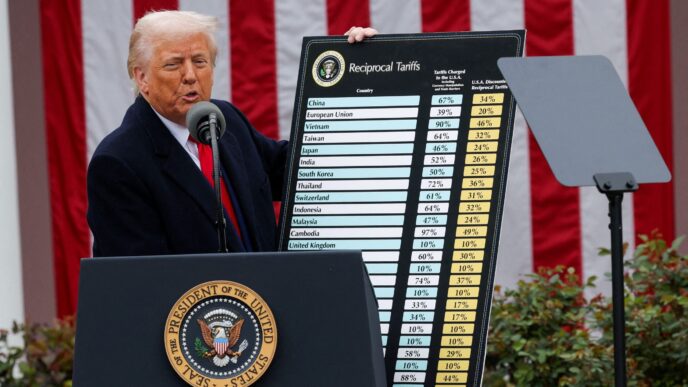“Tone at the top” refers to the ethical environment created by senior leadership, with particular emphasis on the CEO’s influence in setting standards of behaviour throughout an organisation. It’s more than just formal statements or codes of conduct; it’s the daily example and values that leaders embody. When a CEO demonstrates integrity, honesty, and responsibility in their decisions and interactions, it sends a powerful signal to employees at every level. Conversely, if a top executive’s words and actions conflict, it can breed cynicism and undermine any stated commitment to ethics.
Employees, shareholders, and the wider public often look to the CEO as the face and moral centre of the company. A CEO’s personal credibility can inspire trust, rally employees behind a shared mission, and reassure investors about the company’s future. This influence extends beyond internal culture to shape how stakeholders – customers, regulators, and business partners – perceive the organisation. A strong ethical tone at the top fosters transparency, reduces the likelihood of misconduct, and preserves the company’s reputation, even under pressure. Simply put, when the CEO champions integrity, they lay the groundwork for a robust, values-driven culture that resonates across all facets of the business.
The CEO as Culture Champion
A company’s culture is shaped not only by policy documents but also by the behaviours and attitudes leadership displays every day. For employees, the CEO serves as the most visible role model – an embodiment of the organisation’s professed values. From how they address team members in meetings to the way they respond to ethical dilemmas, a CEO’s actions communicate what is truly prized and permissible. This visibility becomes especially crucial in times of crisis or uncertainty, when the workforce looks to senior leaders for guidance. A CEO who demonstrates empathy, honesty, and accountability under pressure reinforces a culture where integrity is non-negotiable. By contrast, if the chief executive is perceived as evasive or inconsistent, it can sow doubt and diminish the moral authority needed to maintain a strong ethical climate.
Beyond modelling behaviours, an effective CEO explicitly articulates the principles and standards that guide the company’s decisions. This might involve publishing a clear mission statement, championing ethical codes of conduct, or regularly emphasising the importance of transparency and respect during all-hands forums. When these values are embedded into operational processes – such as performance reviews, project approvals, and cross-departmental collaborations – they shape how employees approach their daily tasks. Over time, consistent messaging from the CEO helps employees internalise the organisation’s core values and understand the rationale behind key initiatives or policy stances. This clarity of purpose not only empowers workers to make sound judgments but also cultivates a unified sense of purpose across diverse teams.
Ultimately, the strongest indicator of a CEO’s commitment to ethical culture is their ability to “walk the talk.” Leaders who publicly laud the virtues of fairness or honesty but privately engage in questionable deals undercut their own credibility. Such disconnects erode trust, fuelling scepticism among employees who see a gap between rhetoric and reality. Conversely, when a CEO demonstrates ethical consistency – by refusing to sanction dubious strategies, upholding transparent financial reporting, or personally addressing misconduct – employees grasp that integrity isn’t just a slogan but a lived ethos. This alignment of words and deeds cements ethical standards as genuine and enforceable, ensuring they cascade effectively throughout the corporate hierarchy.
Mechanisms for Shaping Ethical Culture
Formal guidelines and clear-cut policies are the bedrock upon which an ethical culture rests. When a CEO champions the creation and enforcement of these codes – outlining acceptable behaviours and specific consequences for breaches – employees see that integrity is more than a lofty goal; it’s a concrete expectation. Such documents typically address conflict-of-interest situations, gift policies, anti-discrimination measures, and other vital areas. However, merely having these guidelines on paper isn’t enough. The CEO’s support is critical to ensure they are updated regularly, integrated into training programs, and actually followed in day-to-day operations. By investing in robust compliance structures and ensuring these standards aren’t diluted for quick wins, the CEO signals that cutting corners or sidestepping rules is incompatible with the company’s identity.
Open, honest dialogue around ethical dilemmas, corporate challenges, and even past mistakes fosters a climate of trust. When the CEO sets the tone by openly discussing lessons learned from errors – be they operational missteps or ethical grey areas – employees become more comfortable raising concerns and seeking guidance. Regular CEO-led forums, whether through town halls, Q&A sessions, or virtual updates, create channels for feedback. This inclusive style of communication not only clarifies expectations but also helps detect systemic issues early. It also reinforces the notion that ethics is a collective responsibility, not merely a top-down directive. In environments where transparency thrives, employees are less likely to feel pressured into unethical shortcuts.
Impact on Decision-Making and Governance Practices
When a CEO visibly prioritises ethics, it resonates far beyond the executive suite. Managers and frontline employees, mindful of the “tone at the top,” begin factoring moral considerations into strategic and operational choices. A clear ethical stance can shape decisions such as which suppliers to partner with, how to market products, or whether to enter new markets. For example, in a situation where a vendor offers steep discounts but engages in dubious labour practices, a CEO’s firm ethical leadership can sway teams to reject the deal – even if it seems lucrative in the short run. By consistently upholding this principle, the organisation ingrains integrity into everyday processes, ensuring that profit and purpose move in tandem rather than in opposition.
A robust ethical culture, led from the top, prompts deeper due diligence on potential risks. Beyond regulatory compliance or financial checks, leaders begin asking: “Does this align with our values? Could this partnership or project damage our reputation, trust with stakeholders, or employee morale?” With ethics woven into corporate culture, teams proactively identify and address red flags – whether it’s a prospective customer with a history of unethical behaviour or a merger that could conflict with corporate values. This expanded view of risk, spanning reputational and cultural considerations, can avert crises before they escalate, preserving resources and safeguarding stakeholder confidence.
Strong ethical leadership from the CEO also enhances the relationship with the board of directors. When the CEO regularly shares updates on ethics initiatives, potential conflicts of interest, or compliance audits, board members gain a clearer window into the company’s cultural health. This transparency encourages more active governance: directors can pose pointed questions about ethical dilemmas, examine incentive structures for unintended consequences, and ensure that new initiatives don’t compromise integrity for growth. Conversely, a CEO who downplays or conceals ethical concerns invites stricter scrutiny – or even backlash – from the board.
Consequences of a Weak Ethical Tone
- Erosion of Trust and Morale: When senior leadership’s words ring hollow – promoting principles they fail to embody – the resulting disconnect can significantly damage employee engagement. Workers may begin to question whether the company’s professed values are genuine or merely lip service. This scepticism can lead to lower productivity, higher turnover, and a pervasive sense of disillusionment. Notably, the corrosive effect often extends beyond staff: customers, partners, and investors become wary of a company that appears to disregard its own ethical standards. As trust deteriorates, collaboration across departments may falter, slowing innovation and undermining the cohesive efforts that drive successful outcomes.
- Legal and Reputational Fallout: A CEO who neglects or undermines an ethical culture creates fertile ground for compliance breaches, fraud, and other misconduct. Without clear examples of accountability, some employees may feel emboldened to cut corners or engage in unethical deals, believing there will be minimal repercussions. These lapses can invite regulatory scrutiny, trigger lawsuits or fines, and spark public outrage once the details emerge. Consequently, the organisation’s reputation – carefully built over years – can unravel in weeks or even days. In an era of instantaneous social media amplification, a single scandal can overshadow a company’s achievements and cast doubt on its leadership’s ability to steward the business responsibly.
- Diminished Long-Term Sustainability: Choosing expedient, ethically dubious paths might yield short-term wins, but such decisions often exact a hefty toll down the line. Corrupt practices, hidden liabilities, and toxic workplace cultures rarely remain contained indefinitely. As employees become complicit in or resigned to unethical behaviour, the organisational fabric weakens, making it difficult to uphold quality standards, innovate, or maintain stakeholder goodwill. Investors and partners attuned to sustainability and corporate governance may withdraw support, viewing the company as a high-risk proposition. Ultimately, a weak ethical tone depletes the intangible assets – credibility, loyalty, shared vision – that underpin sustainable growth, leaving the business vulnerable to crises that can be far more damaging than any immediate gain was worth.
Strategies for CEOs to Foster an Ethical Environment
- Leading with Empathy and Authenticity: At the heart of any effective ethical culture is a CEO who genuinely cares about the well-being of employees, customers, and the broader community. Empathy-led leadership means recognising that decisions have real human impact and making a conscious effort to understand diverse perspectives before acting. In practice, CEOs can demonstrate empathy by regularly visiting frontline teams, engaging in candid conversations about workplace challenges, and actively listening to personal stories that reveal where corporate policies might be inadvertently causing harm or frustration. Authenticity further reinforces this empathy: when CEOs speak openly about lessons learned from their own missteps or acknowledge organisational flaws, they signal a safe environment for others to do the same.
- Maintaining Two-Way Feedback Loops: A truly ethical culture thrives on open communication, where concerns can be voiced early and resolved collaboratively. While many organisations have whistleblower hotlines or compliance committees, a culture that values ethics demands more than formal channels. CEOs can hold regular listening sessions, town halls, or office hours, inviting direct input from employees at all levels. These sessions should be structured to encourage honest dialogue without fear of retaliation or judgment. By responding transparently to questions – even if the answer is “we don’t know yet” – CEOs build trust. This open-door ethos not only uncovers potential ethical blind spots but also emboldens employees to take the initiative in upholding company values.
- Continuous Improvement and Adaptation: Ethical cultures evolve alongside shifting markets, societal norms, and regulatory landscapes. A static code of conduct, no matter how robust at inception, can become obsolete if leadership fails to revisit its relevance periodically. Forward-thinking CEOs commit to ongoing cultural audits, engaging employees and stakeholders to assess whether current practices align with core values. If gaps emerge, they address them proactively, revising policies, updating training, and recalibrating incentive systems. This cyclical process of evaluation and refinement ensures the company remains responsive to emerging ethical challenges. Moreover, by championing these iterative improvements, CEOs underscore that ethics is not a one-time endeavour but a dynamic, integral part of the organisation’s growth and resilience.
Measuring and Reporting Ethical Culture
Quantifying the health of an organisation’s ethical environment can be challenging but essential. CEOs who prioritise ethical leadership often support periodic employee engagement surveys or specialised ethics questionnaires, gauging whether staff feel comfortable voicing concerns and whether they trust leadership to act on reported issues. Tracking the usage of whistleblower hotlines or anonymous reporting channels – and the average time to resolution – provides insight into how effectively potential misconduct is handled. Turnover rates in high-risk departments, as well as the frequency and severity of compliance incidents, can also serve as indicators of broader cultural conditions. These metrics, taken together, help leadership identify trends, spotlight departmental hotspots, and measure progress against stated ethics goals.
In an era of heightened stakeholder scrutiny, openly discussing the organisation’s ethical commitments and track record can reinforce credibility. CEOs can integrate ethics data into broader sustainability or ESG (Environmental, Social, and Governance) reports, highlighting areas such as training completion rates, disciplinary actions for infractions, and improvements to policies. Publicly sharing lessons from past ethical lapses – and the steps taken to prevent recurrence – shows humility and accountability. While some details may need to remain confidential for legal or privacy reasons, the principle of transparent communication about the company’s ethical journey builds trust among investors, customers, regulators, and employees alike.
A CEO’s commitment to ethics gains momentum when board members actively champion ethical governance. Establishing dedicated ethics or compliance committees at the board level underscores the importance of monitoring culture across the enterprise. Regular updates on whistleblower cases, third-party audits, or employee feedback sessions ensure the board is fully apprised of potential risks and cultural blind spots. By collaborating on measurable ethics goals and consistently reviewing progress, CEOs and board directors reinforce a system of checks and balances that upholds the organisation’s values. In this environment, ethical leadership becomes less a personal directive and more an institutional standard – safeguarding the company’s integrity well into the future.
Conclusion
A company’s ethical culture hinges on the example set by its most senior leaders – none more so than the CEO. By consistently modelling the values they champion, CEOs pave the way for a workforce that understands and embraces integrity as part of daily operations. This influence cascades through every tier of the organisation, shaping how risks are managed, decisions are made, and relationships are fostered both internally and externally. At its core, a strong tone at the top creates an environment where doing the right thing isn’t just encouraged, but instinctive.
For current and aspiring CEOs, self-reflection is key:
- Are your public commitments to ethics mirrored in your personal actions and choices?
- Do employees see tangible rewards for ethical behaviour?
- Do you actively seek out and address ethical concerns, or are channels for feedback simply formalities?
Answering these questions can reveal gaps between rhetoric and reality. Addressing those gaps – by revisiting codes of conduct, rethinking incentive systems, or deepening engagement with frontline teams – ensures that integrity remains foundational, not optional.
As stakeholder expectations evolve and regulatory landscapes shift, CEOs who place ethics at the heart of their leadership will find themselves better equipped to handle turbulence. A workforce aligned around shared values can adapt to change more swiftly, innovate more responsibly, and maintain stronger bonds of trust with customers, communities, and investors. Ultimately, the tone at the top sets the moral compass for the entire organisation – one that can guide it through both everyday challenges and extraordinary crises, safeguarding reputations and fuelling sustainable success.













